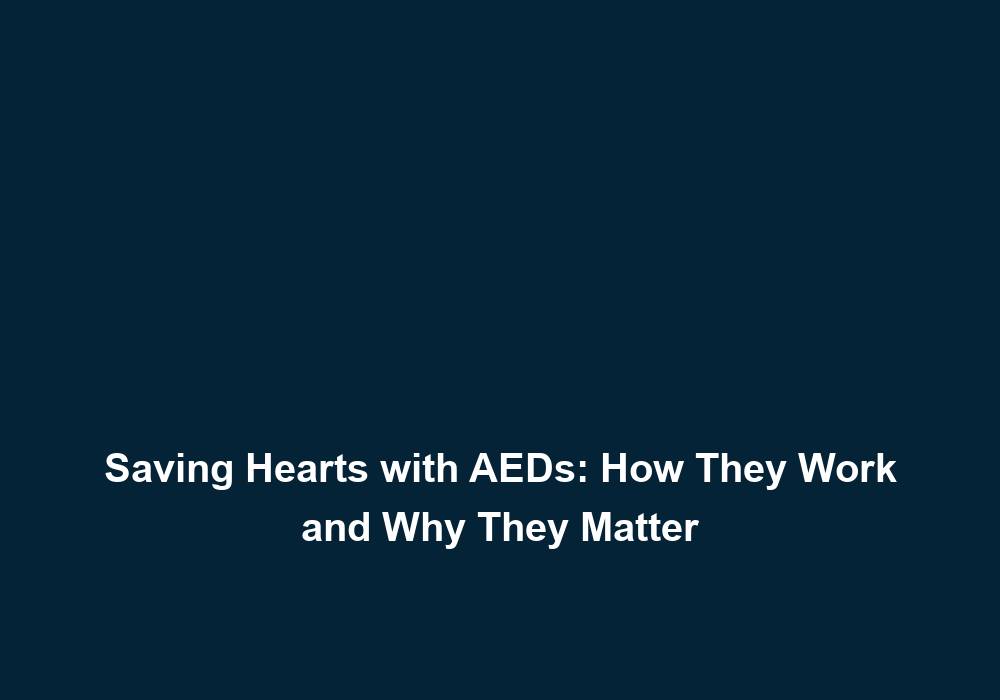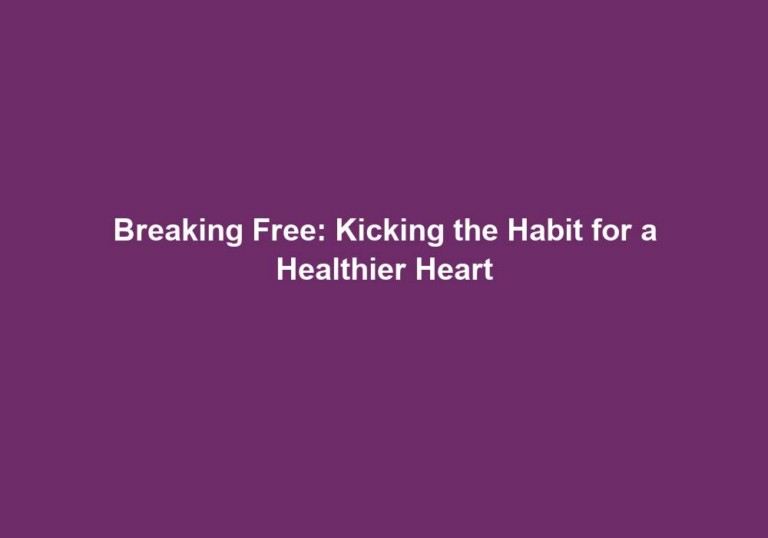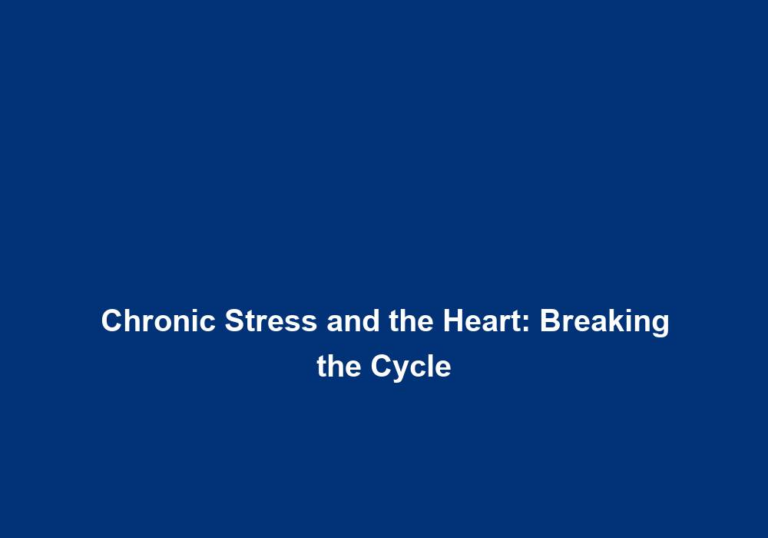Saving Hearts with AEDs: How They Work and Why They Matter
The use of Automated External Defibrillators (AEDs) has become increasingly important in saving lives during sudden cardiac arrest (SCA) incidents. These portable devices are designed to deliver an electric shock to the heart, restoring its normal rhythm. In this article, we will explore how AEDs work and why they are crucial in emergency situations.
Understanding Sudden Cardiac Arrest (SCA)
Before delving into the working of AEDs, it is essential to understand what Sudden Cardiac Arrest entails. SCA is a condition where the heart suddenly stops functioning, leading to a loss of blood flow to vital organs. This can occur due to various factors such as ventricular fibrillation, a rapid and irregular heart rhythm, or ventricular tachycardia, a fast but regular heart rhythm.
SCA can strike anyone, regardless of age or overall health. However, certain individuals, such as those with existing heart conditions, are at a higher risk. Immediate intervention is crucial to increase the chances of survival, and this is where AEDs play a vital role.
How Do AEDs Work?
AEDs are user-friendly devices that can be operated by anyone, even without medical training. They are designed to analyze the heart’s rhythm and provide prompts and instructions on when and how to deliver an electric shock if necessary. Let’s take a closer look at the steps involved in using an AED:
-
Recognize the Emergency: When someone collapses or displays signs of cardiac arrest, it is essential to identify the situation as an emergency and call for medical assistance immediately. This prompt recognition ensures that the necessary help is on the way while the AED is being retrieved.
-
Retrieve and Activate the AED: Locate the nearest AED and turn it on. Most AEDs have clear instructions and voice prompts that guide the user through the entire process. It is crucial to act swiftly in accessing the AED to minimize the time between collapse and defibrillation.
-
Prepare the Chest: Expose the person’s chest and wipe away any moisture or sweat to ensure proper electrode adhesion. This step is important as it allows for optimal contact between the electrodes and the skin, facilitating accurate analysis of the heart’s rhythm.
-
Apply the Electrodes: Attach the sticky pads, called electrodes, to the person’s chest as indicated by the AED. Typically, one pad is placed on the upper right chest, just below the collarbone, and the other on the left side of the chest, below the nipple. These electrodes are responsible for transmitting information about the heart’s rhythm to the AED for analysis.
-
Analyze the Heart Rhythm: The AED will automatically analyze the person’s heart rhythm by measuring the electrical activity through the attached electrodes. It will determine if a shock is necessary. The accuracy of this analysis is crucial in ensuring that a shock is only delivered if the person’s heart requires it.
-
Clear the Person: Before delivering a shock, it is crucial to ensure that no one is in contact with the person or any surrounding surfaces to avoid injury. The AED will provide clear instructions to stand clear. This step is essential to prioritize the safety of both the rescuer and the person in cardiac arrest.
-
Deliver the Shock: If the AED determines that a shock is required, it will prompt the user to press the shock button. The shock delivered by the AED helps restore the heart’s normal rhythm. This electric shock is carefully calibrated to be effective in restoring the heart’s rhythm while minimizing any potential harm to the person.
-
Perform CPR: Following the shock, the AED may instruct the user to perform CPR (Cardiopulmonary Resuscitation) to help circulate the blood until medical professionals arrive. CPR involves chest compressions and rescue breaths, which are crucial in maintaining blood flow and oxygenation to vital organs.
-
Continue as Directed: The AED will provide further instructions, such as when to stop CPR and resume analyzing the heart rhythm. These instructions are designed to guide the rescuer through the entire resuscitation process, ensuring that appropriate actions are taken at each stage.
It is important to note that AEDs will only deliver a shock if the person’s heart requires it. The devices are designed to analyze the heart rhythm accurately and minimize the risk of unnecessary shocks. This ensures that the intervention provided by AEDs is targeted and effective.
The Importance of AEDs in Saving Lives
AEDs are crucial in saving lives during SCA incidents due to their ability to rapidly restore normal heart rhythm. Here are some key reasons why AEDs matter:
-
Time is Critical: SCA requires immediate intervention, as every minute without treatment decreases the chances of survival by about 7-10%. AEDs can be found in public places, workplaces, and community spaces, allowing for prompt access and potentially life-saving treatment before emergency medical services arrive. The widespread availability of AEDs significantly reduces the time it takes to initiate defibrillation, increasing the likelihood of a positive outcome.
-
User-Friendly Design: AEDs are designed to be user-friendly, making them accessible to anyone, regardless of their medical training. The devices provide clear instructions and voice prompts, guiding even inexperienced individuals through the life-saving process. This user-friendly design empowers bystanders to take immediate action, bridging the gap between collapse and professional medical help.
-
Increased Survival Rates: Studies have shown that prompt use of an AED, combined with CPR, can significantly increase survival rates for SCA victims. For every minute defibrillation is delayed, the chances of survival decrease by 7-10%. AEDs help bridge the critical gap until professional medical help arrives. The early delivery of a shock by an AED improves the chances of restoring normal heart rhythm and increases the likelihood of a successful resuscitation.
-
Reduced Dependency on Emergency Medical Services: AEDs empower individuals to take immediate action during a cardiac emergency, reducing the dependency on emergency medical services alone. This timely intervention can make a significant difference in saving a life. By equipping public spaces and workplaces with AEDs, communities can create a network of first responders who can initiate life-saving measures while awaiting the arrival of professional medical help.
-
Cost-Effective Solution: AEDs are a cost-effective solution, considering the invaluable impact they have on saving lives. The initial investment in purchasing and maintaining AEDs is outweighed by the potential lives that can be saved within the community. Moreover, the use of AEDs can also reduce the long-term healthcare costs associated with prolonged cardiac arrest and its consequences.
In conclusion, AEDs are instrumental in saving lives during sudden cardiac arrest incidents. These user-friendly devices analyze the heart’s rhythm and provide clear instructions on delivering an electric shock if necessary. With their widespread availability and ease of use, AEDs play a critical role in increasing survival rates and providing immediate intervention when every second counts. Investing in AEDs and raising awareness about their importance can make a tremendous difference in saving hearts and preserving lives.
This article has been written in markdown format for the given title.







